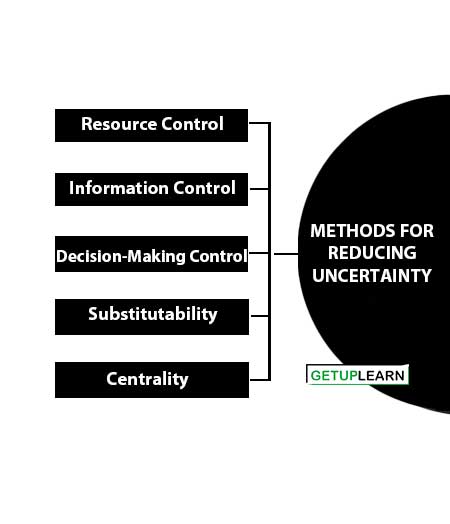Table of Contents
What is Uncertainty Reduction?
Organizations must operate in the face of uncertainty about their key resources: Human capital, raw materials, supplies, and equipment, money, and technology. Those who are able to reduce uncertainty have power in the organization.
Methods for Reducing Uncertainty
These are the basic ways or methods for reducing uncertainty are:

Resource Control
Groups or individuals gain resource control when they acquire hard-to-get resources and maintain access to them. In these cases, groups that have resource control can reduce uncertainty for other groups by providing access to the necessary resources.
Information Control
The organization members who can provide needed information have power because they can reduce uncertainty for others. Changes in technology and organizational structures are intensifying the importance of information power.
Hence a person’s power may be more closely related to his or her ability and willingness to share information with those who can apply it toward maintaining a competitive advantage.
Decision-Making Control
The groups and individuals who make decisions about the use of resources also have relatively great power. Logically, the decision-makers can reduce uncertainty by making and communicating decisions affecting others in the organization.
Those who gain the power from decision-making control are the ones who make decisions about basic policies and practices such as, what the organization will produce and who its target market will be.
Substitutability
The power of an individual or group is inversely related to the person’s or group’s substitutability. People are powerful because they cannot easily be replaced. In other words, organizations cannot find a substitute for their skills or knowledge. Being a hard-to-replace employee is not always advantageous.
If a manager views an employee as indispensable for a particular job, that employee may miss opportunities for promotion or career development. And if the employee becomes associated with a particular job or way of doing things, changes in the organization can render him or her highly dispensable.
Centrality
Central groups are those that have many connections with other groups and a large effect on workflow. Thus, groups and individuals in a central position are generally more powerful than those at the periphery. These people have command of key information and other resources, and others in the organization are likely to be aware of what they control and how they affect the organization.
